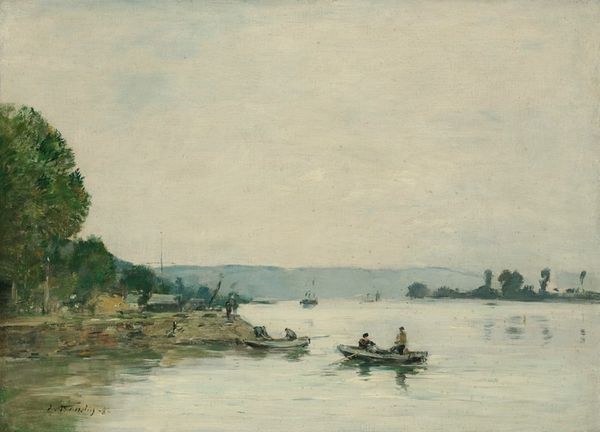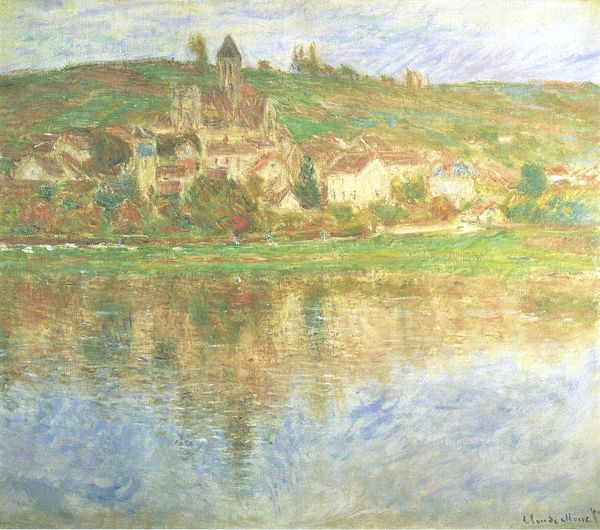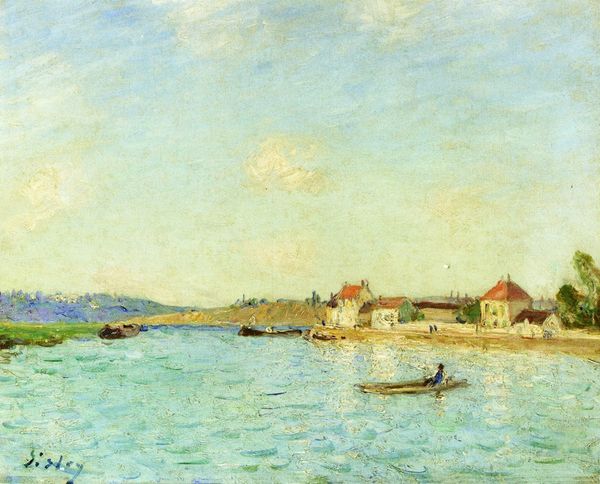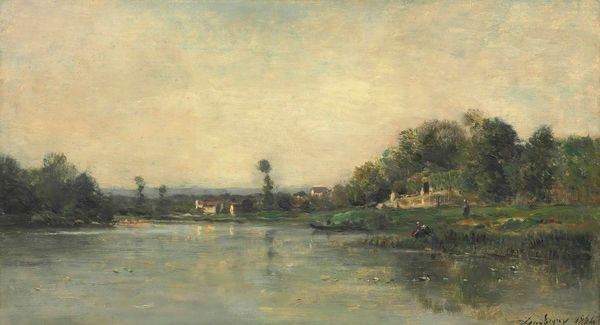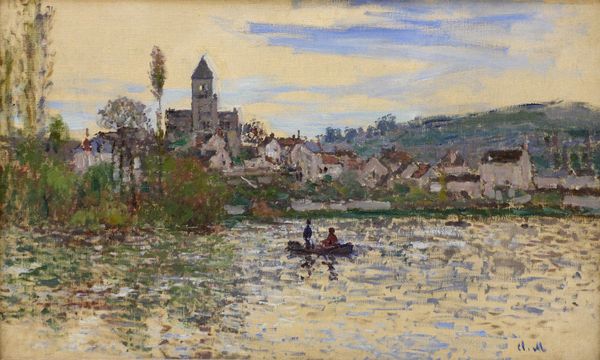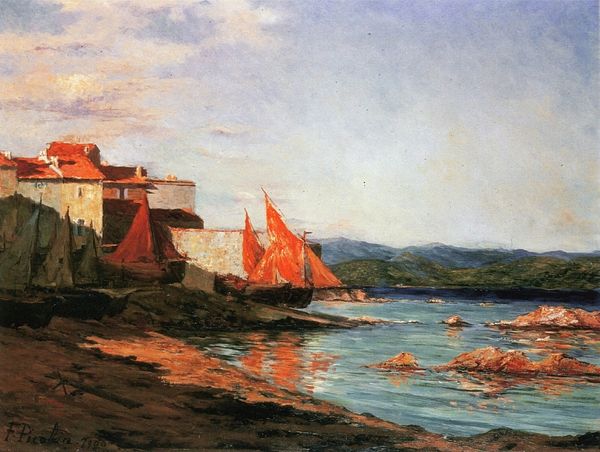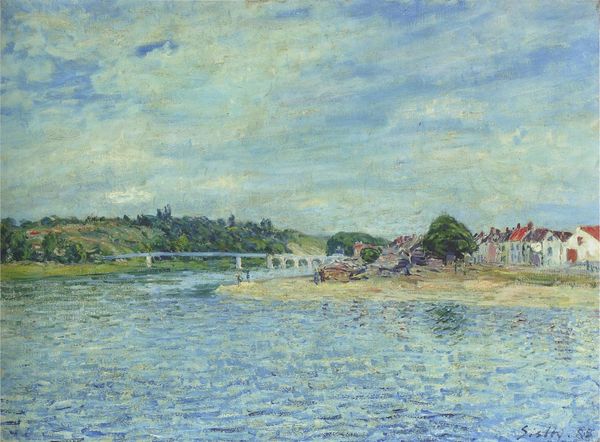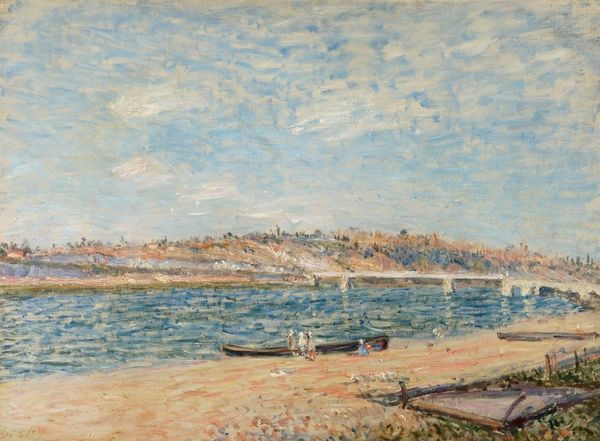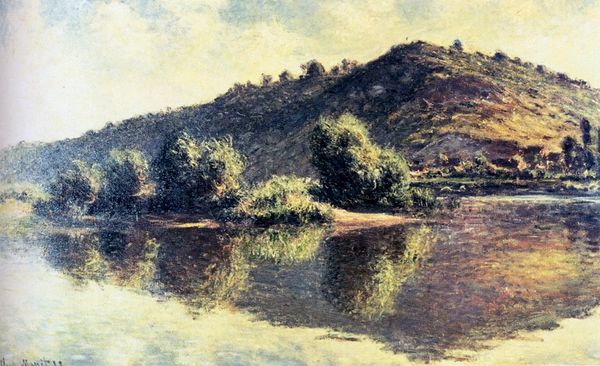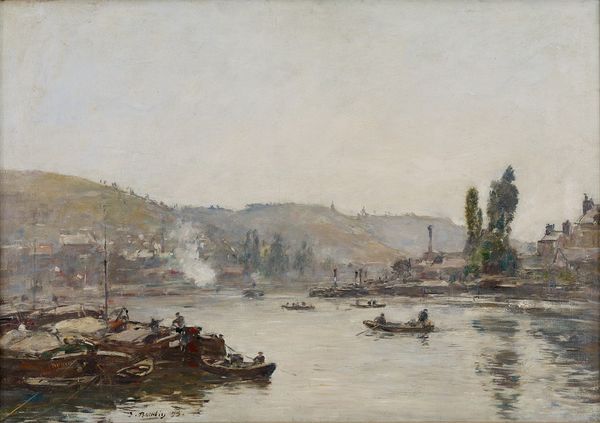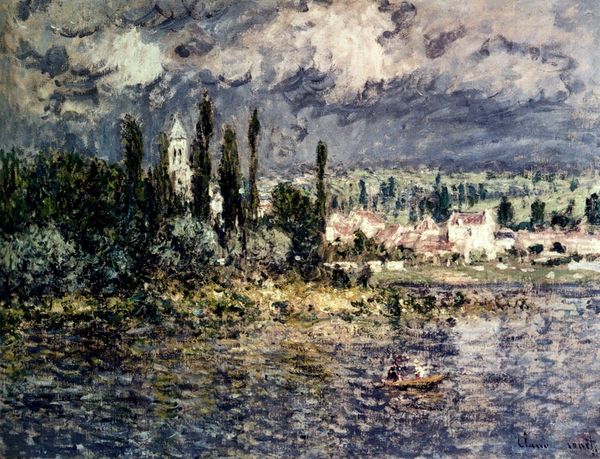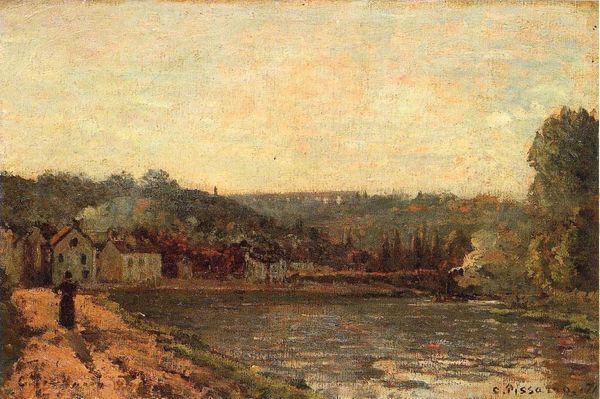
Copyright: Public domain
Editor: This is Claude Monet's "Vetheuil, Barge on the Seine," painted in 1902. I am really struck by the way he captures light on the water. How do you interpret this work? Curator: Let's begin with the composition. Monet deliberately uses a horizontal format, emphasizing the tranquil expanse of the Seine. Notice how the painting is divided into distinct zones: the river in the foreground, the green bank in the mid-ground, and then the village, with the church as its compositional capstone. What does that layered approach communicate to you? Editor: I guess that helps build the space, how the layers move the eye back into the background. I noticed his brushwork seems really loose, almost abstract up close. Curator: Precisely. It is that tension between representation and abstraction that really makes this sing. Look at how Monet uses visible brushstrokes to suggest the movement of water and light. Consider the interplay of complementary colors – oranges and blues and how the textured surfaces themselves become a vehicle for expression. Are we truly seeing the Seine, or the very act of painting the Seine? Editor: I never really thought about it that way, about the act of painting being just as important as the subject. It feels like Monet is more interested in the visual sensation of the water than creating a perfect picture of the village in the background. Curator: Indeed, the surface is where meaning resides. By analyzing the brushstrokes, the application of color, we unlock not just a landscape but an exploration of perception itself. Editor: So much to think about. This definitely shifted my perspective on Monet beyond just pretty pictures. Curator: Mine, too.
Comments
No comments
Be the first to comment and join the conversation on the ultimate creative platform.

